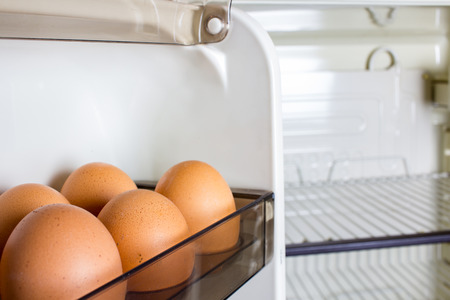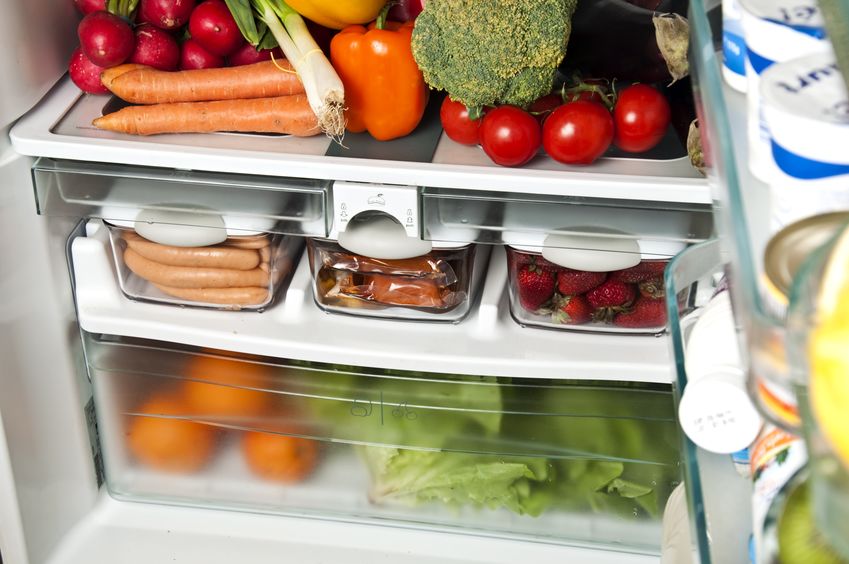- Clean Home
- Kitchen Cleaning & Organizing
- Fridge Food Storage Tips
Fridge Food Storage Tips
These fridge food storage tips can keep food safe from spoilage and bacteria. Used correctly, your refrigerator will keep food safe from spoilage and bacteria.
Used incorrectly, it could cause big trouble of the tummy kind. Refrigerating foods helps keep them fresh, but they won't last forever. Virtually no food benefits from storage. You want to eat everything as fresh as you can.
Since we can't all tromp out to the garden to harvest produce for each meal, here are some fridge food storage tips to help your fridge function at its best.
Fridge Food Storage Tips Basics
- To keep food from spoiling in the refrigerator, the temperature needs to be between 34 F and 40 F. You can't depend on the little gauge (1-5) in the fridge. Get a refrigerator thermometer.
- Some parts of the refrigerator are colder than others. The meat compartment at the bottom is designed to store meat - so put meat there. Not only is this food storage area the coldest, but if a package leaks, it won't contaminate other foods.
- The door is the warmest part of the refrigerator. This is the best place for nonperishables (sodas), not perishables like eggs.
- Don't put hot food in the refrigerator. Bring it to room temperature before refrigerating it. Hot food can cause refrigerator temperatures to drop.
- On the other hand, don't leave food out too long, either. Refrigerate prepared food within two hours of cooking (one hour in the summer.)
- Don't overload the refrigerator. Parties are a dangerous time because you cram a lot of food into the refridgerator, and then you're continually opening the door. Turn the temperature down during these occasions to keep the food cold.
- Cover foods tightly. Leave meats in their original packaging to prevent spreading bacteria and germs around your kitchen.
- Don't store bread, cookies, or most cakes in the refrigerator; they will become stale.
- Tell your family not to stand gazing slackjawed into the open refrigerator while they decide what they wan to eat.
- If you lose power, do not open your refrigerator or freezer. If the door is not opened, it should be provide safe food storage for 8 hours in the refridgerator and 48 hours in the freezer.
How Long Refrigerated Food Keeps
Refrigerating foods helps keep them fresh, but they still won't last forever. So, how long is chicken good for in the fridge? How long can meat stay in the fridge and safely be eaten?
Here are some answers to these and other questions of how long it's safe to keep these and ofther foods in the fridge:
- Eggs: 3 weeks
- Cooked vegetables: 3 to 4 days
- Fresh vegetables: Ranges from 2 days for soft veggies like asparagus or okra to 2 weeks for hard vegetables like radishes or carrots.
- Meats, fish, or poultry: 2 days cooked; 1 to 2 days uncooked
- Other meats: 3 to 5 days
- Deli meats: 5 days; 3 to 5 days for prepackaged deli meats once opened
- Hot dogs: 1 week opened; 2 weeks unopened
- Milk: 5 to 7 days
- Sour cream: 4 weeks
- Fresh eggs: 3 weeks
- Pies: 1 to 2 days
Frozen Food Storage Tips
Freezing food will keep it from spoiling, but the quality will still deteriorate over time. Use frozen foods as soon as possible, and follow these guidelines:
- Don't refreeze foods.
- Mark the date on foods when you put them in the freezer.
- Don't rely on the little freezer gauge (1-5). Get a thermometer instead. The freezer should be kept at 0 F to 5 F.
- Freeze only fresh foods.
- Wrap foods tightly.
Final fridge food storage tips final advice: When in doubt, throw it out! A little thriftiness is not worth a tummyache.
- Clean Home
- Kitchen Cleaning & Organizing
- Fridge Food Storage Tips









